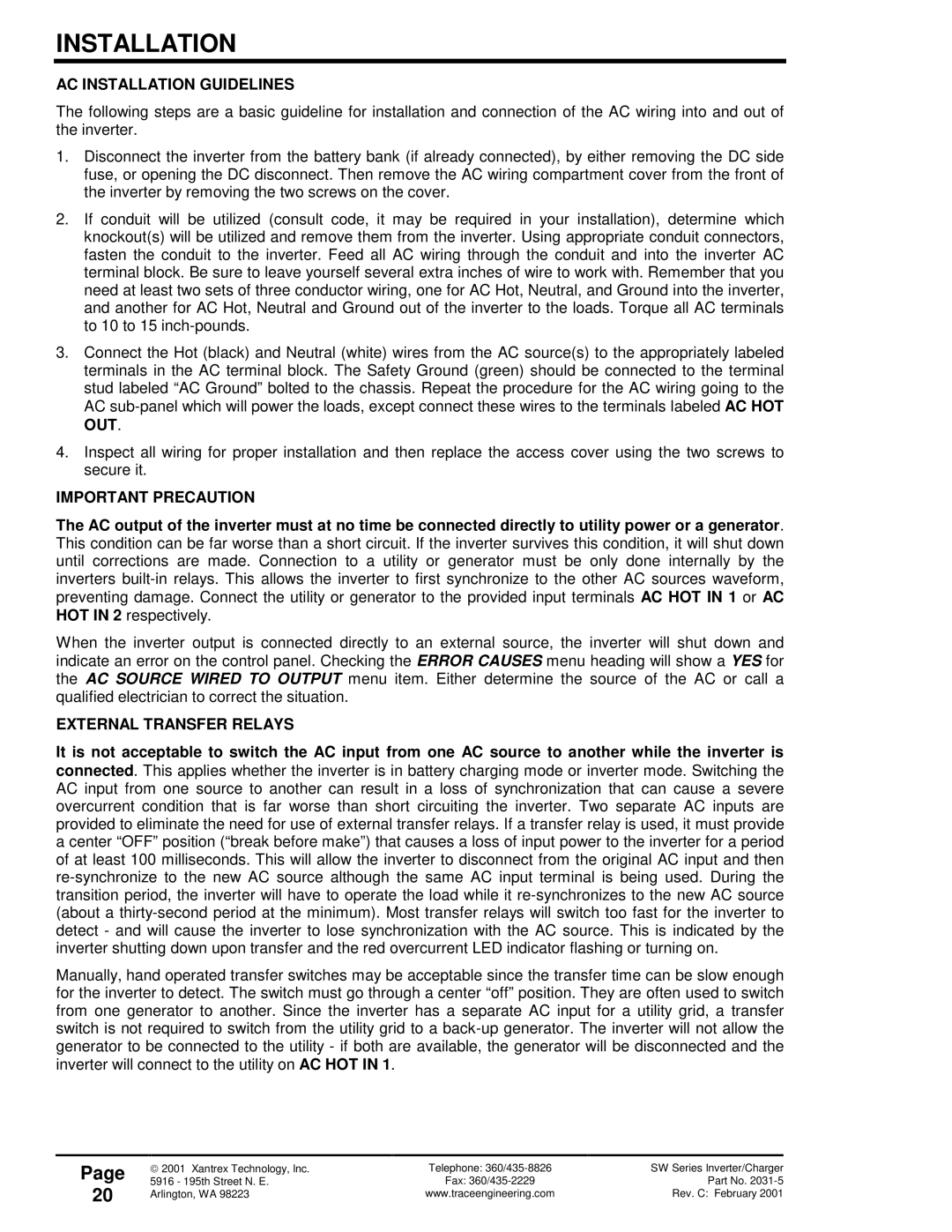SW Series specifications
Xantrex Technology has established itself as a leader in innovative power solutions, and its SW Series inverters epitomizes this commitment to quality and efficiency. Designed for both standalone and grid-tied applications, the SW Series offers versatile power management for a range of residential and commercial needs.At the heart of the SW Series is its advanced pure sine wave output, ensuring clean and reliable electricity suitable for sensitive electronics. This feature makes it an excellent choice for applications such as solar energy systems, where it provides high-quality power for a variety of devices, from household appliances to complex machinery.
One of the key characteristics of the SW Series is its modular design, which allows for easy installation and scalability. This modularity enables users to expand their power system as their energy needs grow, making it an ideal choice for both small and large installations. The inverters come equipped with a user-friendly interface, providing clear information on system performance, battery status, and more, ensuring that users can effectively monitor and manage their energy consumption.
The SW Series inverters also incorporate cutting-edge technology, such as the patented Power Factor Correction (PFC) feature, which optimizes energy efficiency by reducing harmonic distortion. This translates into less wasted electricity and lower energy costs, making it an environmentally friendly option for users looking to reduce their carbon footprint.
Another notable feature of the SW Series is its ability to operate in extreme conditions. Built with robust components and advanced thermal management systems, these inverters can withstand a wide range of temperatures and environmental challenges, ensuring reliable performance in various settings. This durability makes them suitable for off-grid applications, including remote cabins, RVs, and boats.
Furthermore, the SW Series supports a variety of battery types, including lithium-ion, AGM, and gel batteries, offering flexibility for users to choose the best energy storage solution for their needs. The sophisticated battery management system ensures optimal charging and discharging, prolonging the lifespan of the batteries and enhancing the overall efficiency of the power system.
In summary, Xantrex Technology's SW Series inverters stand out for their pure sine wave output, modular design, energy efficiency features, and robust performance in challenging conditions. With their versatility and advanced technology, they cater to the evolving needs of today’s power consumers, making them a compelling choice in the modern energy landscape.

